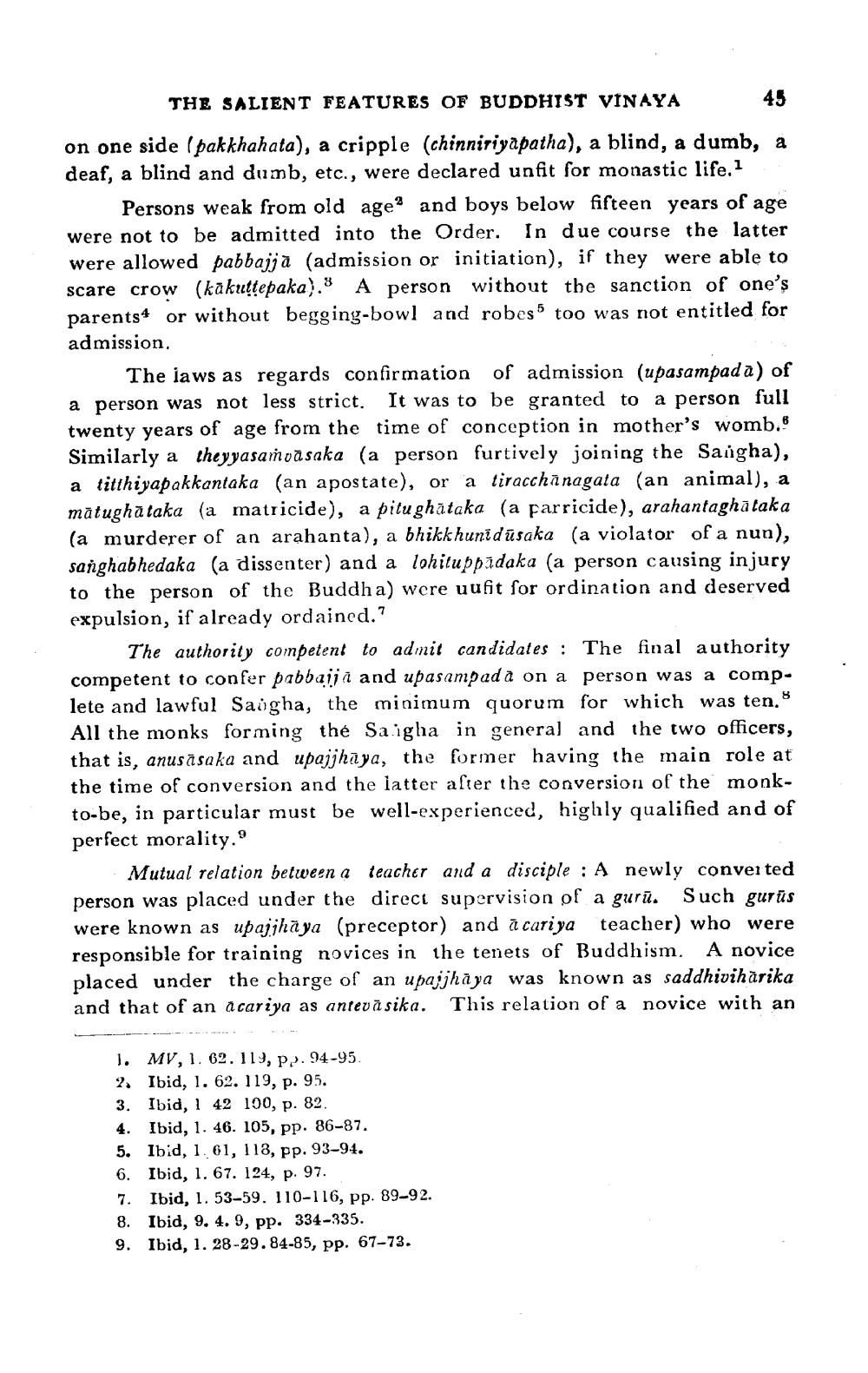________________
THE SALIENT FEATURES OF BUDDHIST VINAYA
45
on one side (pakkhahata), a cripple (chinniriyapatha), a blind, a dumb, a deaf, a blind and dumb, etc., were declared unfit for monastic life.1
Persons weak from old age" and boys below fifteen years of age were not to be admitted into the Order. In due course the latter were allowed pabbajja (admission or initiation), if they were able to scare crow (kakuṭṭepaka). A person without the sanction of one's parents or without begging-bowl and robes 5 too was not entitled for admission.
The laws as regards confirmation of admission (upasampada) of a person was not less strict. It was to be granted to a person full twenty years of age from the time of conception in mother's womb." Similarly a theyyasamvasaka (a person furtively joining the Sangha), a titthiyapakkantaka (an apostate), or a tiracchanagata (an animal), a matughataka (a matricide), a pitu ghataka (a parricide), arahantaghātaka (a murderer of an arahanta), a bhikkhunidūsaka (a violator of a nun), sanghabhedaka (a dissenter) and a lohituppadaka (a person causing injury to the person of the Buddha) were uufit for ordination and deserved expulsion, if already ordained."
The authority competent to admit candidates: The final authority competent to confer pabbajja and upasampada on a person was a complete and lawful Saigha, the minimum quorum for which was ten." All the monks forming the Sangha in general and the two officers, that is, anusasaka and upajjhaya, the former having the main role at the time of conversion and the latter after the conversion of the monkto-be, in particular must be well-experienced, highly qualified and of perfect morality."
Mutual relation between a teacher and a disciple: A newly converted person was placed under the direct supervision of a guru. Such gurus were known as upajjhaya (preceptor) and a cariya teacher) who were responsible for training novices in the tenets of Buddhism. A novice placed under the charge of an upajjhaya was known as saddhiviharika and that of an acariya as antevasika. This relation of a novice with an
1. MV, 1. 62. 119, pp. 94-95.
2. Ibid, 1. 62. 119, p. 95.
3. Ibid, 1 42 100, p. 82.
4. Ibid, 1. 46. 105, pp. 86-87.
5. Ibid, 1 61, 113, pp. 93-94.
6. Ibid, 1. 67. 124, p. 97.
7. Ibid, 1. 53-59. 110-116, pp. 89-92.
8. Ibid, 9. 4. 9, pp. 334-335.
9. Ibid, 1. 28-29.84-85, pp. 67-73.




